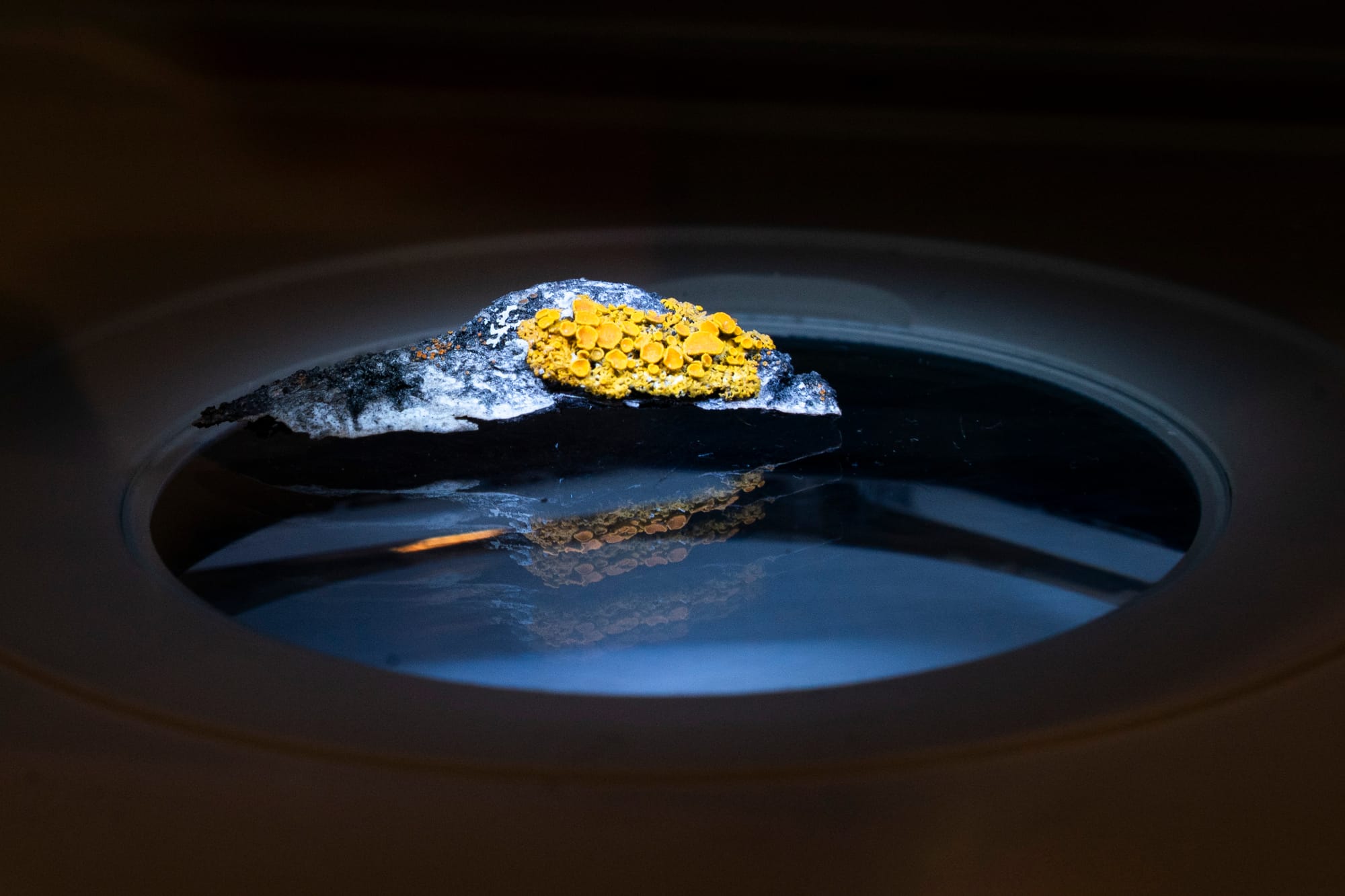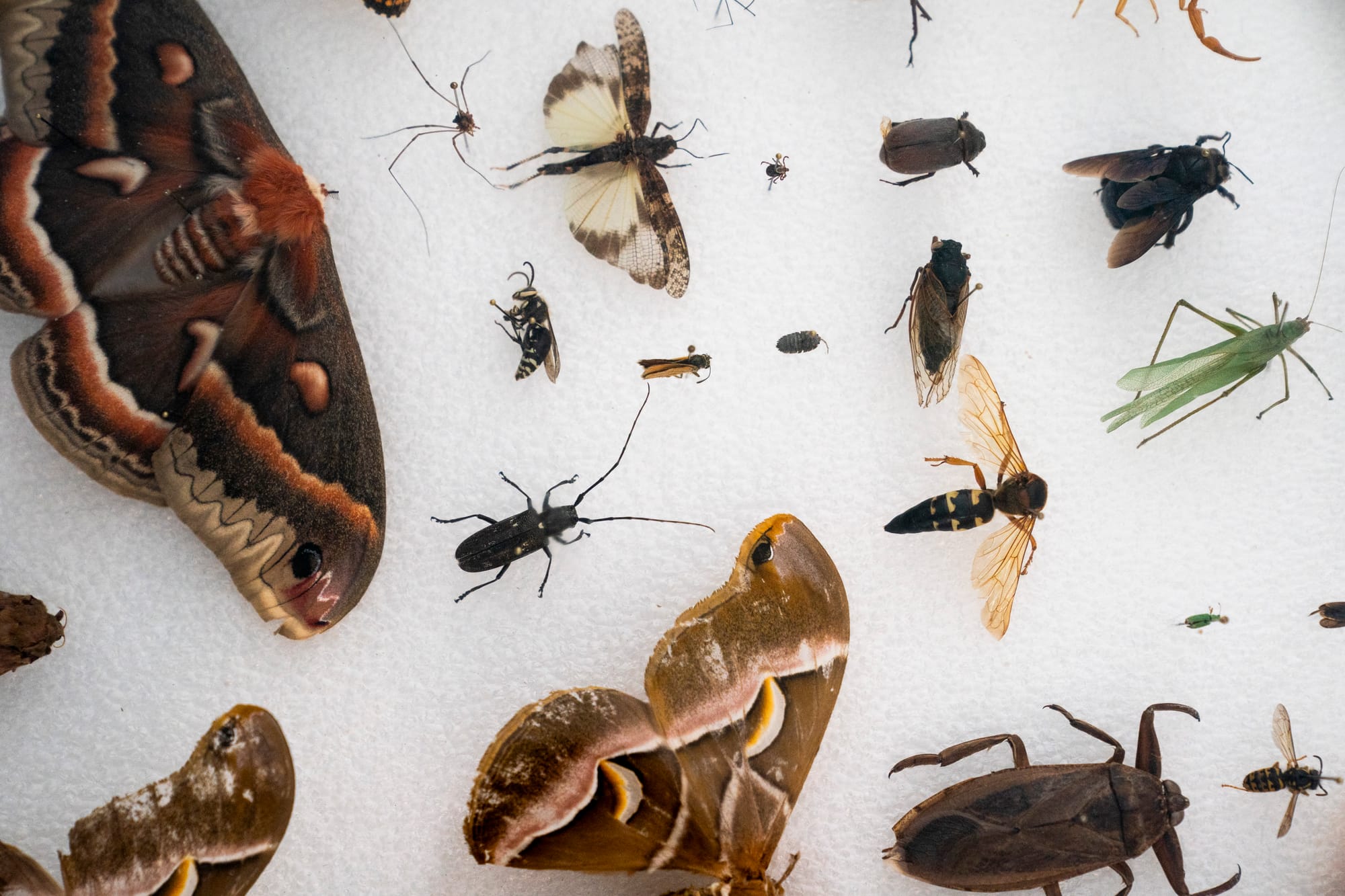Biomimicry: Duluth woman seeks solutions through nature
“Nature has come up with some really amazing things. That’s really what biomimicry is about," said Sue Okerstrom.

This story was updated on Aug. 29, 2024 with the correct description of Botswana's salt flats, as well as the accurate range Okerstrom's microscopes can magnify specimens. Outdated information about programming through Lichen Labs was removed. Project Optimist regrets the errors.
Scientist and researcher Sue Okerstrom gently cradles an ivory-colored tubular object roughly the size of a large water thermos. With its complicated textures and patterns, it’s nearly impossible to discern its potential use. Without a super-powered microscope, you wouldn’t be able to see what inspired it either.
Okerstrom knows to look closely when it comes to finding solutions through biomimicry, a growing field that studies adaptations that already exist in nature. In her Duluth-based Lichen Labs, she studied microscopic scales and hairs found on the wings of a Samia cynthia moth, which can fly silently enough to elude the ultrasonic hearing and echolocation of bats who prey on them.
She then upscaled the moth’s microscopic wing structures into acoustic-tile prototypes using a 3-D printer. She hopes the tiles can absorb the sound frequencies that can be disruptive to autistic children at a new school and to create more calming and effective classrooms.
“Nature has come up with some really amazing things,” Okerstrom said. “That’s really what biomimicry is about.”

Exploring evolves to research
Okerstrom grew up in Virginia and spent her childhood exploring nature and following her curiosity, especially at a family cabin by Lake Vermillion. A sixth-grade teacher first inspired her to become a scientist, and she chose to attend Bemidji State University for its new environmental sciences program; she graduated in 1979.
She didn’t have luck finding an environmental science position and wound up apprenticing as a metallurgical technician for the mining industry, which she labored in to put herself through college.
She took those skills to Medtronic to work on electrodes and pacemaker components. She also went back to school for a master’s degree in materials and engineering and earned a coveted spot as a technical fellow with a focus on research and innovation.
A San Diego Zoo employee gave a talk on biomimicry at a 2012 conference, while showing an armadillo’s folding body armor and other clever adaptations to its environment.
That armadillo and introduction to biomimicry marked her “Ah-ha!” moment. It brought together her lifetime interest in art, nature, and science, as well as her expertise in microscopy and materials such as metals, ceramics, and polymers.
“[Biomimicry] is what I want to do for the rest of my life,” she said.

Exploring biomimicry
Okerstrom sought more information and found Biomimicry 3.8, an organization founded by biologist Janine Benyus that fueled the movement with her 1997 book, “Biomimicry: Innovation Inspired by Nature.” The “3.8” refers to the 3.8 billion years that organisms have evolved to meet the challenges of life on Earth. Okerstrom applied for its professional certificate program, which was later accredited by Arizona State University as the first biomimicry master’s degree program in the United States.
Okerstrom and her cohort of other students did coursework online from 2013-2015. The group included people from fields such as design, engineering, biology, and business. Quarterly travels gave them the chance to do in-depth studies and explorations in a variety of ecosystems: Montana’s Rocky Mountains and shortgrass prairie, Arizona’s Sonoran Desert, Vancouver Island’s temperate rainforest and tidal zones, Costa Rica’s rainforest and reefs, North Carolina’s deciduous forest, and Botswana’s savanna and salt flats.

“We learned so much about nature and the ecosystems,” she said, and they discovered that many patterns and adaptations were similar no matter where they were. “It was really just amazing.”
By the time she was halfway through the program, she left Medtronic and set up her own laboratory.
“For me,” she said, “everything starts with the microscope.”

Microscopy expands mimicry
Moving between compound, stereo and an electron microscopes that can magnify specimens from 7 to 100,000 times, Okerstrom, who is a past president of the Minnesota Microscopy Society, can study the unseen marvels of nature’s engineering.
She may have a specific mission, like studying the moth wings for potential sound-absorbing acoustic tiles, or she follows her own explorations and curiosity and sees where that takes her.
Lichen, which inspired the name for her lab, exist without roots, require a collaborative relationship with fungi or algae, and cover about 8 percent of the earth’s surface with the ability to live for thousands of years. They also can absorb pollutants and metals, which is something to study further for technology to help reclaim polluted areas.


“I follow my curiosity, and I have the tools to look at things and find out what is happening,” said Okerstrom. “It’s a process of zooming in and zooming out and looking at all dimensions.”
Fishing spiders, for example, fascinate her with their ability to sense movements of minnows in the water through their legs and their ability to inject prey with venom and an enzyme to help digest them. A microscopic study shows how they can breathe underwater through superhydrophobic skin and structures that trap a layer of air around their bodies.
“Nature is full of what you would call multifunctional design,” Okerstrom said, and those innovative adaptations provide ongoing inspiration. “By following nature’s processes, we can design products that are efficient, cost-effective and eco-friendly.”



Biomimicry in action
Here are just a few examples of how nature has inspired innovation.
Butterflies and $20 bills
Thanks to microscopy, scientists discovered that iridescent blue morpho butterflies don’t have blue wings — at least not due to natural pigment. Instead, layers on their wings refract and bend light to look blue. That replicated light-bending technology can be seen on every $20 bill and helps prevent counterfeiting. The “$20” printed on the right front side shimmers gold or green depending on how the light hits it.
Kingfishers and bullet trains
The front of Japanese bullet trains mimic the beak of kingfisher birds, which can dive soundlessly into water to hunt for dinner. The design prevents sonic booms as trains speed through tunnels.
Cockleburs and Velcro
Every kid who can skip the shoe-tying lessons thanks to Velcro sneaker straps can thank the inspiration of cockleburs. The inventor studied the rounded seeds that tenaciously cling to clothing and dog fur before creating the hook-and-loop fasteners.
Sharks and swimsuits
Sharkskin has been studied and imitated by swimwear manufacturers — most famously Speedo in the 2000 Sydney Olympics — and now its microscopic scales are being studied for their bacteria-inhibiting properties that don’t require chemicals or antibiotics.
Geckos to glue
Adhesive innovators studied the small hair-like projections on the toe pads of geckos, who can climb any surface, to create a product that sticks better, doesn’t leave a residue, and can be reusable for less waste.
St. Cloud-based Lisa Meyers McClintick has been an award-winning journalist and photographer for more than 30 years. The second edition of Lisa’s "Day Trips from the Twin Cities" hit bookshelves June 4. When she’s not writing, she’s in the woods taking photos, working on her nature journal and volunteering with the Minnesota Master Naturalist program.
This story was edited by Jen Zettel-Vandenhouten. This story is part of our Biophilia series about nature and design, and it's supported by a grant from Arts Midwest. Learn more here.
